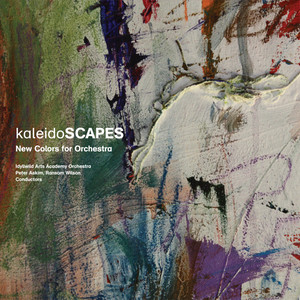
Songlines for Orchestra
- 歌唱: Peter Askim
- 乐团: Idyllwild Arts Academy Orchestra
- 发行时间:2009-01-01
- 类型:Single
- 歌曲
- 时长
-
作曲家:Peter Askim
简介
Peter Askim – Songlines (2008) Program Notes Songlines is inspired by the book of the same name by Bruce Chatwin. The book traces Chatwin’s travels across the Outback of Australia and chronicles his encounters with the Aboriginal peoples there. Chatwin is particularly enthralled by the Aboriginal concept of the “Dreamtime” – a time when the Ancestors wandered the continent, bringing the world into being by “naming” it in song. As they walked, they both created the world, and simultaneously charted their path through it, by means of music. In The Beginning the Earth was an infinite and murky plain, separated from the sky and from the grey salt sea and smothered in a shadowy twilight. There were neither Sun nor Moon nor Stars. Yet, far away, lived the Sky-dwellers…Then, like the baby’s cry, each Ancestor opened his mouth and called out, “I AM!” And this first “I am!,” this primordial act of naming, was held, then and forever after, as the most secret and sacred couplet of the Ancestor’s song… That their entire creation myth centers around “singing the world into being” reveals the extent to which music is fundamental to the Aboriginal concept of existence itself. The idea that one creates and defines one’s world by way of song is a testament to music’s power to create both identity and interconnection. There emerges an image of the map of Australia as interwoven song-lines, crisscrossing the continent and each other, forming a web of song. From the Aboriginal creation myths, Chatwin draws parallels to more universal concepts of mankind. He suggests that restless, nomadic wandering and the simultaneous definition of one’s surroundings through song are fundamentally human behaviors. One’s own song is a manifestation of the inner vibrations of the soul and traces a path that leads back to man’s shared origins. I have a vision of the Songlines stretching across the continents and ages; That wherever men have trodden they have left a trail of song –(of which we may, now and then, catch an echo); and that these trails must reach back, in time and space, to an isolated pocket in the African savannah, where the First Man opening his mouth defiance of the terrors that surrounded him, shouted the opening stanza of the World Song, “I Am”. Songlines proposes a powerful idea: that music, specifically song, represents the most human of activities: creating order from chaos, tapping into the realm of the eternal and defining one’s self and one’s surroundings through the most primal vibrations in the human body – the voice. The Ancients sang their way all over the world. They sang the rivers and ranges, salt-pans and sand dunes. They wrapped the whole world in a web of song; and at last, when the Earth was sung, they felt tired. Again, in their limbs they felt the frozen immobility of Ages. Some sank into the ground where they stood. Some crawled into caves. Some crept away to their “Eternal Homes” to the ancestral waterholes that bore them. All of them went “back in”. The music of Songlines follows the same general contour of the Dreamtime: it emerges out of cloudiness and ambiguity, wanders a twisted, sometimes gnarled path through both pastoral and turbulent landscapes, and eventually finally settles in peace. The music “goes back in”, as Chatwin puts it. The melodies originate as a prayer-like figure (inspired by a traditional Aboriginal chant), and grow organically into “songlines” which traverse across the musical terrain. At times, they meander gently; in other cases, they are jagged and angular. In every case, they share a vocal quality and a sense of musically searching for an elusive path through the wilderness. The idea of songlines applies not only to the visible universe, but to the inner landscape as well. Just as song is used by the Aboriginies in the “Dreamtime” to explore, name and define their surroundings, the music of Songlines wends its way through the uncharted emotional territory of the soul, creating meaning as it goes. The restless, twisted wanderings of song fragments are emblematic of exploration, a struggle for meaning amidst the ambiguities and chaos of the self. Thousands of intertwining strands of melody join to create a twisted, meandering, continuous subconscious melody – a map of the soul that is as unique to each individual as the Ancestors’ songs were.

